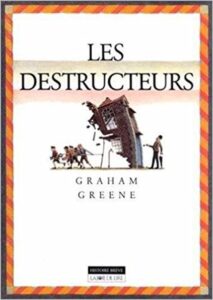Crafting Childhood Stories: Useful Writing Tips
Childhood stories, who hasn’t read them? Many adults have fond memories of their parents telling them stories at bedtime. And many of them are now parents themselves and find themselves in need of good stories.

Merely reusing old stories is great, but sometimes parents want to create their own stories too. Well, if you are such a person, then welcome. We will teach you how to write stories that your children can read. So, let’s see how you can write such stories.
Useful Story Writing Tips
1. Must Have a Moral Lesson
A good childhood story must always have some kind of moral lesson. Popular stories like the honest woodcutter, teach important character traits such as truthfulness, honesty, and staying away from evil.
So, any story that you craft must also have some moral lesson that can be easily understood by a child. Make sure that it is a positive lesson that motivates your child to be a good human being.
Common moral lessons that can be taught to children through stories are:
- Honesty is the best policy.
- Greed only leads to unhappiness.
- Hard work and perseverance lead you to success.
- Do not lie as it makes people lose trust which is detrimental.
- Bad deeds come back to bite you.
You can easily write stories that teach these moral lessons.
2. Utilize Situations that Children Can Relate With
One thing that you should focus on is the setting of your story. Children have a hard time imagining things they know nothing about. So, all your stories must be set in places that children are familiar with. They must also focus on situations that children can imagine easily.
For example, a story based on the Pentagon and dealing with secret agents and espionage cannot attract a child because children don’t know what those are. On the contrary, a story set on a farm, a village, or even a city and discusses a normal person’s life with some not-so-normal happenings is much more interesting.
You can even use animals and birds as characters instead of humans to make the stories more engaging for young children. Such stories will make their childhood really colorful.
3. Create a Relatable Character
Children like to read stories in which the main character is also a child. That allows them to self-insert themselves into the story which just adds to their enjoyment. To create a character, you should consider the following things:
- Giving the character relatable traits. Relatable traits can include something like enjoying the same kind of pets, liking the same food, and having similar hopes and dreams.
- Giving the character a challenge or struggle that they overcome in the story. The challenge should be relatable to a child, for example learning to tie their shoes, or adjusting to a new school.
- The character(s) should have some memorable feature or quirk that sets them apart from standard characters.
You don’t necessarily have to create a human character; animals also work fine. Many great authors like Enid Blyton used animals as characters in their stories. So long as the character is relatable to children, it will prove to be an interesting read for them.
4. Keep It Really Easy to Read
When writing stories for children, keep the vocabulary simple and to the point. Introduce some new words that are easy enough to learn, but don’t jump the gun. Too many difficult words will make the story boring and difficult.
If you find that your adult brain is having trouble dumbing the content down to children’s level, then try to rewrite the text to make it simpler. However, rewriting yourself will not be effective since you are already having trouble keeping things simple. Instead, you should try to use an article rewriter.
An article rewriter is a tool that can rewrite any given text in a variety of ways. Many tools like these have specific modes or settings that can improve the readability of the content by making it very simple to read. Utilizing such tools will help you to create stories that can engage children easily.
5. Ensure That There Are No Grammar Errors
Children learn by example, so, your stories should set an example of impeccable writing. Issues like incorrect spelling misplaced punctuation marks, and incorrect tenses will ruin your children’s English proficiency.
Young kids are too inexperienced to know right from wrong. They perceive everything as correct. If your childhood stories have grammar errors in them, then the kids will think that such erroneous writing is in fact correct and that will hurt them later on.
To avoid such rookie mistakes, proofread your stories to find such errors. However, if you are too busy, then you can conduct a grammar check online with the help of a tool. Online grammar checks are great because they can quickly find and highlight all possible grammars errors in a story.
You can then easily correct those highlighted errors using the suggestions that the tool provides. Or you can make your own correction if the tool’s suggestion is not suitable. All in all, it is a much better proposition than manually proofreading the entire story.
Conclusion
So, to craft childhood stories you need to write clearly, using simple words and phrases that children can easily pick up. Your writing needs to be free of grammar errors and spelling mistakes. The story should also stay in a realm that children can imagine, and the story should have a moral lesson to build the children’s character.



